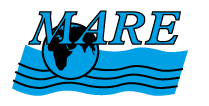A program of the Lawrence Hall of Science that seeks to increase ocean literacy through informal and formal education initiatives
Sea Squares
Rhyming text and illustrations of such sea animals as whale, gulls, clown fish, and seal provide opportunities to practice counting and squaring numbers from one to ten.
Where is Dinah Diatom?
Let Dinah Diatom and her friends take you on a journey along a food chain in the sea. Colorful illustrations and simple rhyming text make this book come alive for children. Familiar West Coast creatures trace the flow of energy through a marine ecosystem from diatoms to whales. Parents and teachers will appreciate ample background information on food chains, and suggestions on how to use the book.
The Lorax
When Dr. Seuss gets serious, you know it must be important. Published in 1971, and perhaps inspired by the "save our planet" mindset of the 1960s, The Lorax is an ecological warning that still rings true today amidst the dangers of clear-cutting, pollution, and disregard for the earth's environment. In The Lorax, we find what we've come to expect from the illustrious doctor: brilliantly whimsical rhymes, delightfully original creatures, and weirdly undulating illustrations.
Growing Up Wild: Penguins
This informative photo essay of the life cycle of Adelie penguins is sure to captivate curious young readers. Stunning color photographs and clear, accessible text flow in this special view of Adelie penguin chicks as they hatch and grow. A truly great invitation to learning. Author’s Note, Glossary, Index.
On the Way to the Beach
Gorgeous illustrations and a unique layout encourage the reader to make observations in a forest, at the edge of a salt marsh, on sand dunes, and on the beach. This transect approach provides an interesting perspective. Fold-out pages list the ecosystem inhabitants, and the reader can search the illustration for each plant, animal, or item. Picture keys at the back of the book allow the reader to identify the ecosystem inhabitants.
Following the Coast
See the eastern coastline of the United States through the eyes of the author, who is a naturalist, fisher-man, boatman, and avid wildlife watcher. Arnosky’s sparkling illustrations and vivid descriptions will transport the reader to the seaside. Introduction.
Coral Reefs
Dr. Sylvia Earle, marine biologist and oceans ambassador extraordinaire is the author of this colorful picture book on coral reefs. The reading level and illustrations are low for seventh graders, but the book is packed with outstanding factual information, a fun at-home experiment, and lovely illustrations.
Invertebrates
This is a current survey of the 34 animal phyla and serves as both a college course text and an excellent reference on invertebrate biology. It is organized around the themes of body plans and evolution (phylogenetics).
Into the A, B, Sea: An Ocean Alphabet
This is a truly wonderful ocean alphabet book full of vibrant action rhyming words and starring a host of remarkable sea creatures. Illustrator Steve Jenkins uses paper collage to great effect--capturing textures and colors of marine animals and algae with astonishing skill. This book crosses all of the habitats covered in the MARE curriculum. Science content expertise was contributed by MARE curriculum developer, Catherine Halversen.
Pages




